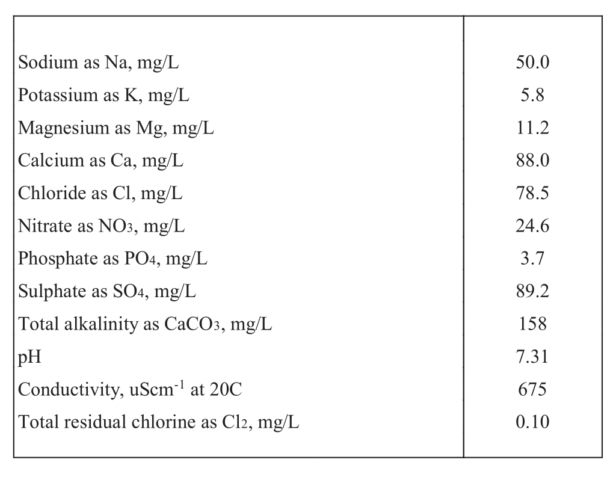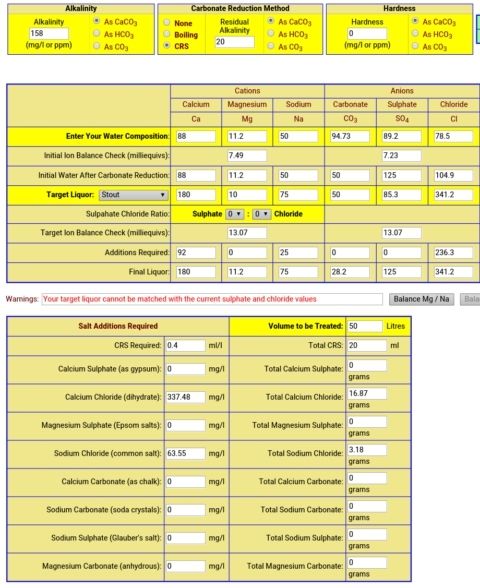Post
by Eric » Tue May 05, 2015 8:31 pm
I fear this ending in dispute, but here we go.
Your water is fine for making beer, don't let anyone (even if you are a supporter and send your hard earned cash) convince you otherwise. It has a level of alkalinity greater than is best for virtually every style of beer and so it is necessary to reduce that element. This can be done several ways but the easiest is with acid. You could boil and rack it off any sediment but it's trial and error as well as expensive and time taking and as it will reduce calcium content and not increase salts will allow a greater range of water styles than when using acids.
CRS is a mix of sulphuric and hydrochloric acids which reduces alkalinity while maintaining calcium, but it increases sulphate and chloride content without significant change of their ratio to one another. You could use a single acid for alkalinity reduction that at the same time would help provide the profile you require, hydrochloric in this particular case, but leave that for later as you are on the right tracks other than maybe being a little short of self confidence.
Different water profiles influence the finished beer from any given recipe. Get the alkalinity wrong and your beer will not be good when compared with another with it correct. Certain ions influence flavour perception, in pale beers sulphate will improve hopping while chloride will add to malt, body and sweetness, but a sulphate bias in dark beers not only reduces its maltiness but can cause harsher flavours to domiate.
Beer can be made with low levels of calcium, but too low and myriads of problems rear their ugly heads. If you are starting a beer that you want to clear quickly and taste good in a fortnight, then is not the time to find what the minimal calcium level is. 100 to 200 ppm is a safe range, it won't always suit the production of delicate beers or the taste of those raised on cold fizzy lager styles who have yet to come to terms with mindbending flavours, but it will help you avoid many problems and more quickly produce a better product and greater self satisfaction than obtainable by getting a specific figure on a pH meter.
The ball is in your court, it's your taste that counts, don't let anyone convince you differently. Good luck, you might be interested in the following..........
That beer I brewed at the end of March was done with my own tap water, hydrochloric acid and added salts to give..........
Calcium 176ppm, magnesium 26ppm, sodium 22ppm, sulphate 130ppm and chloride 312ppm.
Without patience, life becomes difficult and the sooner it's finished, the better.


